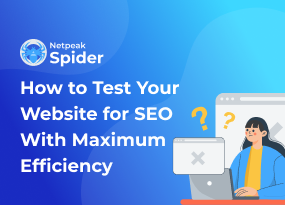How User Experience Fits into Google Page Experience Update
How to
A well-worn mantra in search is if Google announces an update ahead of time, rather than just rolling it out with no warning, it’s an important one. Google also promised to formally give at least six-months’ notice of the rollout date for this update. So there's no excuse not to be ready!
To help you gear up properly, we scrutinized main Google’s stipulations for the upcoming update and showed you how to check your website with Netpeak Spider and Netpeak Checker tools.
You can carry out a comprehensive website analysis in the free versions of Netpeak Spider and Netpeak Checker tools that are not limited by the term of use and the number of analyzed URLs. Other basic features are also available in the Freemium versions of the programs.
To get access to free tools, you just need to sign up, download, and launch the programs 😉
Sign Up and Get Inspiring Insights
P.S. Right after signup, you'll also have the opportunity to try all paid functionality and then compare all our plans and pick the most suitable for you.
- 1. Google’s Page Experience Update is Coming
- 2. Page Speed in a Core Web Vitals Context
- 3. Mobile Friendliness
- 4. Use of HTTPS
- 5. No Intrusive Interstitials on Mobile
- To Sum Up
1. Google’s Page Experience Update is Coming
Several factors that UX may influence, including bounce rate and page speed, are already known to be ranking factors within Google’s core search algorithm. Google’s 2015 rollout of the RankBrain algorithm update focused on user intent. User intent is a vital part of UX, in that your visitors want to see the content they expect when clicking your link in the search results.
If your website relies on organic search traffic from Google, UX will become even more critical in 2021. In May 2020, Google announced its Page Experience Update would roll out at some point next year. This update will combine existing ranking factors with a greater focus on what Google is calling ‘Core Web Vitals’. Given the content of Google's announcement, Core Web Vitals center on speed, responsiveness, and visual stability that help users easily interact with a website.
With all the Page Experience metrics already playing a part in Google’s core search algorithm, you could see yourself making organic visibility gains even before the update!
2. Page Speed in a Core Web Vitals Context
Google notes it will focus on three significant factors for its Core Web Vitals:
- Largest contentful paint (LCP). This measures the speed at which the main content of your page loads. You’ll want this to be the content that appears ‘above-the-fold’ on devices, as this will provide users a ‘perceived’ load speed.
- First impact display (FID), which relates to the interactivity of your page. FID measures how quickly a web browser can respond to user interaction. Just as with LCP, you’ll want users to see content quickly, there should be no delay in how soon they can interact with it either.
- Cumulative layout shift (CLD), which relates to the visual stability of your page. The measure of CLD is how often users experience unexpected layout shifts on your pages, and effectively test how well a responsive website is set up.
Google’s Pagespeed Insights tool has made these metrics available for years, so if you've used it before, you might have already done some work around these. At present, these three factors each have an individual weighting in the Google core search algorithm.
These are all critical parts of your website’s page speed performance. However, nowadays, it’s not all about ‘how fast the page loads’. Things turn out to be more complex – the website may appear to load fast, but respond slowly to user interaction.
Here’s what good UX looks like in the context of Google’s Core Web Vitals:
- LCP should occur within 2.5 seconds of the page starting to load.
- Pages’ FID should be less than 100 milliseconds.
- Pages should have a CLS of 0.1 or lower.
The Pagespeed Insights tool will tell you how you’re performing, and you will also get specific actions to improve these aspects and your overall UX. You may also solve some issues by looking for a quicker web hosting solution rather than through development projects.
You can also check whether your project complies with Core Web Vitals metrics in the Netpeak Checker tool. The trick is that you can check URLs in bulk here (compared to Google's service). To do so:
- Go to the parameters tab in a sidebar, and in the ‘PageSpeed Insights’ group select necessary parameters.
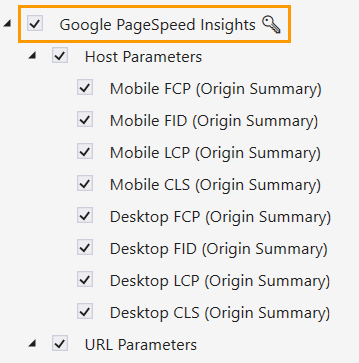
- On the ‘List of URL’ tab, choose the most convenient way of adding URLs that need to be checked, the scanning will start automatically.
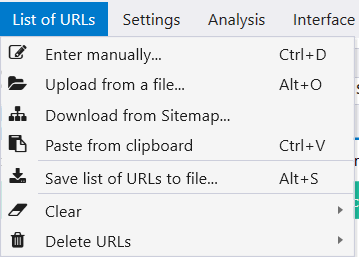
- Finally, you’ll get this table that will show you data on the selected metrics.
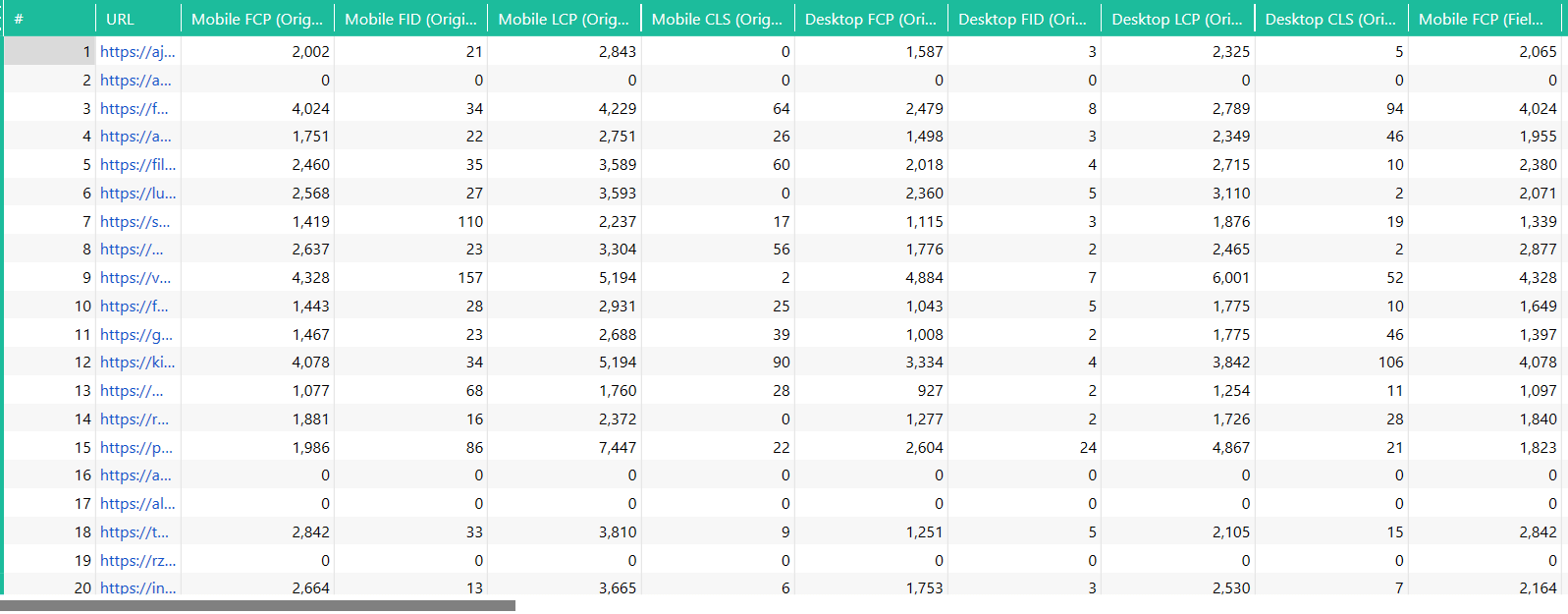
3. Mobile Friendliness
Google first announced mobile-first indexing in 2016, and in March 2020, announced they’d be switching to mobile-first indexing for the whole web from September of this year.
With most searches and website visits now taking place on a mobile device, a mobile-friendly website is a must. Everyone is annoyed by the website that lacks responsiveness and has to be zoomed out to perceive information.
If you don’t already use responsive design to maintain a consistent UX across all devices and browsers, it’s time to revamp your site ahead of the Page Experience Update! It’s also worth ensuring you have Accelerated Mobile Pages (AMP) functionality on your landing pages, which can improve both UX and your mobile search visibility.
Netpeak Spider tool spots AMP pages that don’t comply with AMP Project requirements, marking them as ‘Bad AMP HTML format’. Also, it finds compliant AMP pages. To check AMP pages:
- Tick the ‘AMP’ parameter in the ‘Head Tags’ group in a sidebar.
- Enter the initial URL and start crawling.
- In the end, the main table with ‘AMP HTML’ column will show the TRUE value, which means that the page has an AMP version when FALSE implies the opposite.
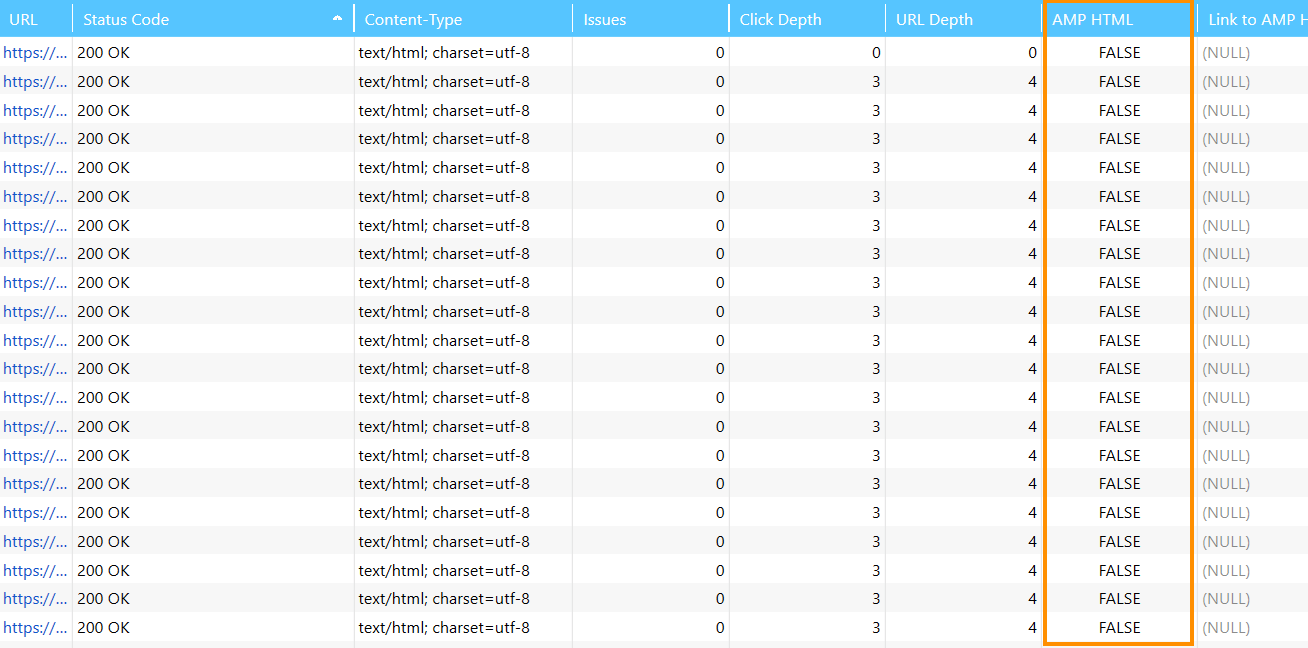
- In the sidebar, you’ll find an issue report. This report shows if the ‘Bad AMP HTML’ error or ‘Compliant AMP Pages’ warning were detected during crawling.
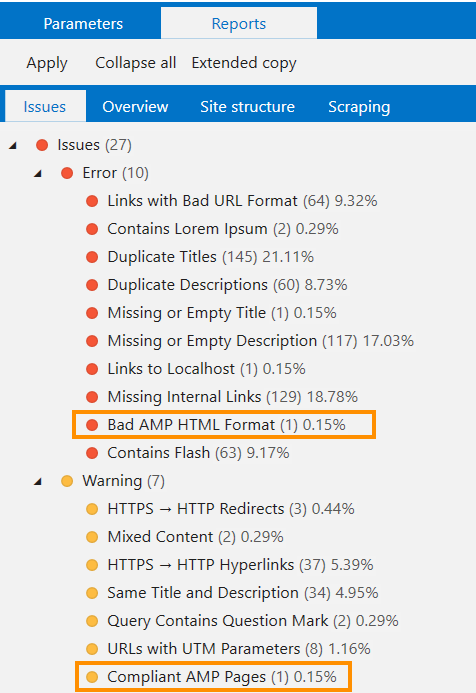
- If there are AMP pages that don’t comply with AMP Project standards, they should be fixed. AMP HTML pages that have a desktop version should be configured as canonicals that lead to this version.
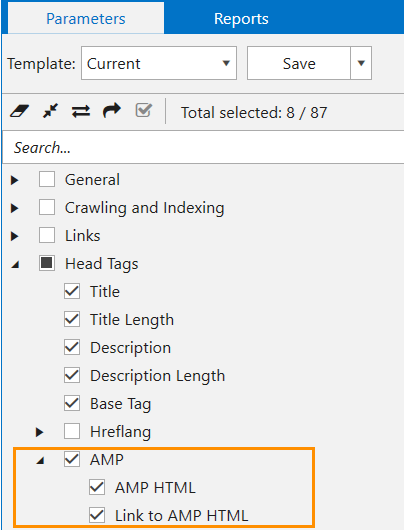
4. Use of HTTPS
HTTPS has been a known ranking signal since 2014, so it’s unbelievable that so many sites still don’t use it.
HTTPS is almost an indirect aspect of UX. Your website can still load quickly and be mobile friendly if you don’t use HTTPS. The only time most users will notice you don’t use HTTPS is when they get a browser alert saying your site isn’t secure.
However, at that point, they’re unlikely to want to submit any information through your website and certainly won’t want to buy anything! Even if you operate a site that is a blog or another informational site that doesn't sell anything or gather data, HTTPS is a must.
One way in which HTTPS issues may directly affect UX is if you have insecure elements, such as images, videos, widgets, and scripts on your page. In this scenario, web browsers will load the page but block the insecure resources, while search engines may not index the pages. Your website visitors will find themselves looking at what appears to be an incomplete page, and they may get a security warning, too.
5. No Intrusive Interstitials on Mobile
When a user is on your website using a mobile, do you interrupt their experience rudely using a pop-up to ask them to subscribe to your newsletter or show them an advert? If so, you’re lowering the UX and hurting your site in an organic search context.
The pop-up is intrusive in case:
- it covers the main content
- it displays a standalone pop-up that the user has to dismiss before accessing the main content
- it uses a layout where the the above-the-fold portion of the page appears similar to a standalone interstitial, but the original content has been inlined underneath the fold.
It doesn’t refer to pop-ups that are used in legal obligations, such as age verification or cookie usage, the banners that are optimized in a way they don’t devour a significant part of the website and are easily dismissible.
The use of interstitials is still widespread, so this could be a quick win in terms of gaining a competitive advantage for your site in search.
To Sum Up
The role of user experience and its importance to your SEO strategy is clear. That Google announced the Page Experience Update ahead of time tells you everything about its importance. Indeed, Google announced all the factors we included here in advance, and it's clear how vital they are both for UX and search today.
While you have at least six months to get ready, remember these are already core algorithm factors, so you could make organic visibility gains by making these improvements as soon as possible.
What do you need to do to make sure your website is ready for the Page Experience Update? Time to get to work!



